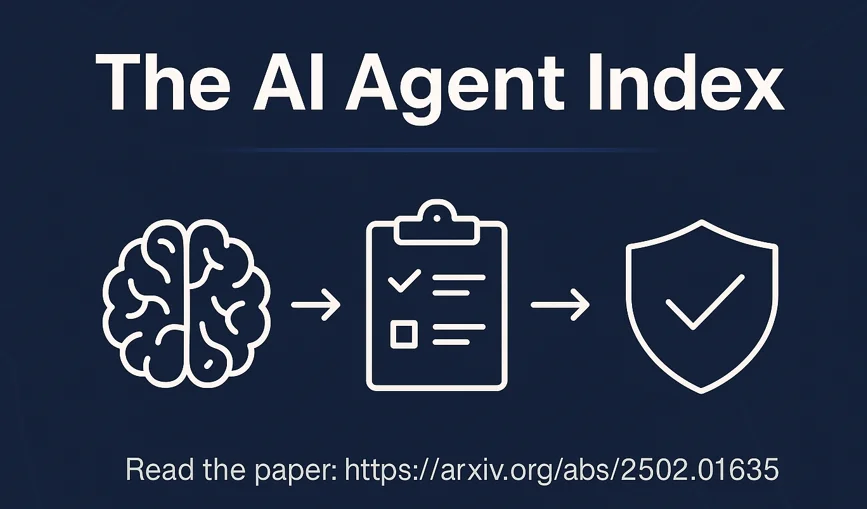🧠 The AI Agent Index: Mapping the New Frontier of AI Agents
As AI agents evolve from lab experiments to real-world tools, the need to document and assess them grows louder. The AI Agent Index, introduced in a recent preprint by researchers at MIT and collaborators from institutions like Stanford and Harvard, tackles this head-on. It’s the first public database cataloguing 67 deployed agentic AI systems, from Microsoft’s Magentic One to open-source tools like AutoGen.
📌 What’s in the Index?
Each system is assessed on:
- Technical makeup (model, reasoning, planning, tools)
- Domains of use (software engineering, research, robotics, etc.)
- Safety measures (policies, evaluations, guardrails)
- Developer background (company vs. academic, country)
🔍 Explore the live index
🔧 Key Takeaways
- 70.1% of systems have public documentation.
- Only 19.4% report formal safety policies.
- The U.S. dominates the landscape, with 45 of the 67 systems.
- Most agents are focused on software development and computer use.
⚠️ Transparency Gap
While the capabilities of these agents are fairly documented, transparency around safety and governance is lacking. Fewer than 10% share results from external safety testing—a serious concern as agents gain autonomy and influence.
🏛 Why This Matters
The AI Agent Index isn’t just a database. It’s a call for accountability—urging developers, policymakers, and users to demand more transparency as AI agents take on increasingly high-stakes roles.
📚 Read the full paper for methodology and insights on what was included, excluded, and how the team ensured data accuracy.


Comments (2)
Joudi
That's interesting, definitely transparency around safety and governance is something we need to push harder for as these systems grow, we need more initiatives like this to keep development responsible as AI agents become more capable.
rama
Definitely — the Index surfaces some really interesting findings, raising awareness about where AI agents stand today and encouraging us all to consider safety as the tech evolves. Will be interesting to see how these stats change over time!
Please log in to comment.